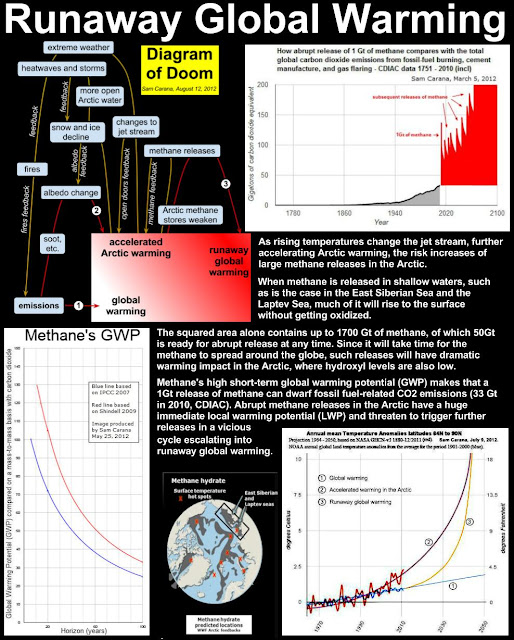Paul Beckwith
This rate of loss is as large as that lost during the August 3rd to 10th cyclone (700,000 to 800,000 square kilometers lost for the duration of the cyclone).
My prediction that we'll lose virtually all sea ice by September 30th, 2012, still seems very reasonable.
Sam Carana
I too estimate there have been losses of 100,000 square kilometer per day for over two months now.
The top image at my recent post on ice extent shows that extent has roughly halved in two months time, from over 12 million square km at the start of June to roughly 6 million square km at the start of August. That's a loss of about 6 million square km in two months time, or about 100,000 square km per day.
To date, this loss rate appears to have continued in August and shows no signs of decreasing yet.










